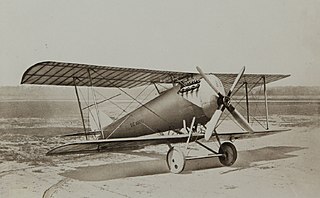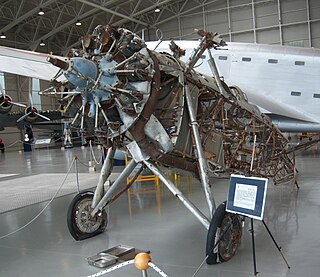SP1 and variants may refer to:

Ansaldo was one of Italy's oldest and most important engineering companies, existing for 140 years from 1853 to 1993.

The Fiat A.12 was a six-cylinder liquid-cooled in-line engine with a bore of 160 mm and a stroke of 180 mm, giving a capacity of just under 22 litres, with variants producing between 245 and 300 horsepower at 1,700 rpm. The A.12 was a rather large aero engine at the time, but it was efficient and reliable. A total of 13,260 A.12s were produced between 1916 and 1919.

General Corradino D'Ascanio was an Italian aeronautical engineer. D'Ascanio designed the first production helicopter, for Agusta, and designed the first motor scooter for Ferdinando Innocenti. After the two fell out, D'Ascanio helped Enrico Piaggio produce the original Vespa.

The Pomilio PE was a First World War Italian armed reconnaissance biplane designed and built by the Pomilio brothers. It was developed from the earlier Pomilio PC and PD.

The Italian Corpo Aeronautico Militare was formed as part of the Regio Esercito on 7 January 1915, incorporating the Aviators Flights Battalion (airplanes), the Specialists Battalion (airships) and the Ballonists Battalion. Prior to World War I, Italy had pioneered military aviation in the Italo-Turkish War during 1911–1912. Its army also contained one of the world's foremost theorists about the future of military aviation, Giulio Douhet; Douhet also had a practical side, as he was largely responsible for the development of Italy's Caproni bombers starting in 1913. Italy also had the advantage of a delayed entry into World War I, not starting the fight until 24 May 1915, but took no advantage of it so far as aviation was concerned.

The Pomilio FVL-8 was a biplane fighter aircraft built by Fabbrica Aeroplani Ing. O. Pomilio for Engineering Division of the Aviation Section, U.S. Signal Corps.
The Savoia-Pomilio SP.1 was a reconnaissance and bomber aircraft built in Italy during the First World War.
The Savoia-Pomilio SP.2 was a reconnaissance and bomber aircraft built in Italy during the First World War. It was a refined version of the SP.1, and like it, took its basic configuration from the Farman MF.11: a biplane with twin tails and a fuselage nacelle that accommodated the crew and a pusher-mounted engine. The SP.2 entered mass production with SIA, and with co-designer Ottorino Pomilio's own firm that he had recently established.

The Savoia-Pomilio SP.3 was a reconnaissance and bomber aircraft built in Italy during the First World War.
The Savoia-Pomilio SP.4 was a reconnaissance and bomber aircraft built in Italy during the First World War. It was a further development of the family of designs that had started with the SP.1. Ultimately all of these took their basic configuration from the Farman MF.11: a biplane with twin tails and a fuselage nacelle that accommodated the crew and a pusher-mounted engine. However, the SP.4 differed both from its Farman antecedent and the previous Savoia-Pomilio designs by featuring twin engines mounted in the interplane gap in place of the single engine in the nacelle. Removing the engine from this position allowed a second machine gun to be placed there instead.

Officine Ferroviarie Meridionali or OFM was an Italian railway and rolling stock manufacturing company based at Naples.

The Piaggio P.IX, or Piaggio Stella P.IX, was an Italian nine-cylinder radial aircraft engine produced by Rinaldo Piaggio S.p.A. Based on the Gnome-Rhône 9K, the engine was rated at 600 hp (447 kW). Production was used to power a number of other aircraft developed in Italy. The main users were the Savoia-Marchetti SM.81 transport and the IMAM Ro.37bis, the main reconnaissance aircraft in the Regia Aeronautica during the Second Italo-Ethiopian War, Spanish Civil War and Second World War, but the engine was also used by other designs, including the prototype Savoia-Marchetti SM.79.











